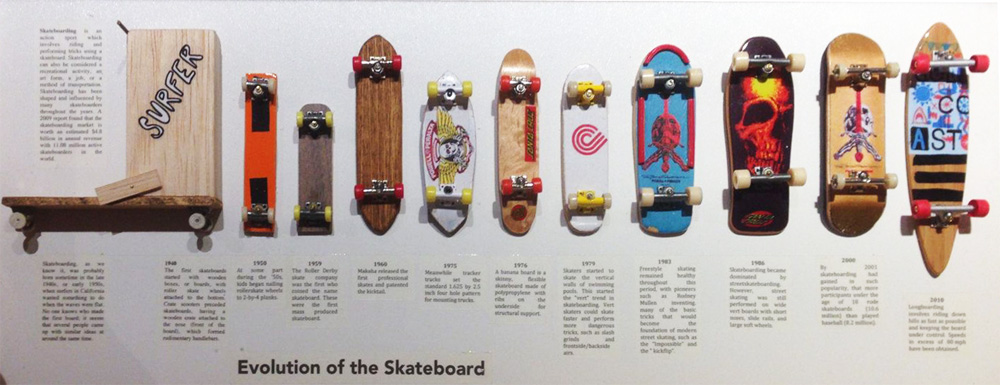What is the Evolution of the Skateboard

Since the 1950s, skate decks have come a long way from simple wooden planks. In the following decade, we saw the first production of skate decks, and the 70s were a time of experimentation with materials, shapes, and grip standards. There was not much evolution until the introduction of laminated maple in the 80s, which resulted in wider boards with more concave and pronounced tails. Professional riders began to design original shapes for their pro models, leading to the emergence of fishtail, cutaway, hips, and jagged rails.
In the 90s, with the decrease of Freestyle and rise of Street Skating, board shapes became standardized, and we continue to use that shape today. The only significant change in the last two decades has been the width of the boards, with a decline in the 2000s to meet the needs of technical streeters.
Recent years have seen a resurgence in bowls and concrete skateparks, leading to a new generation of “all-terrain” skateboarders. As a result, boards have gained momentum, and the average width of a board today is 8.2′.
